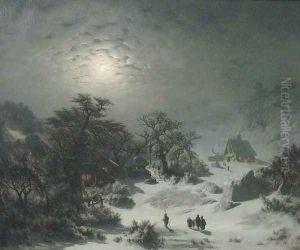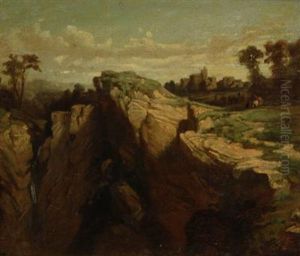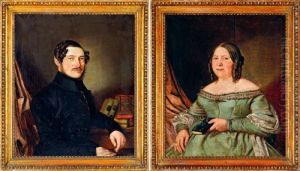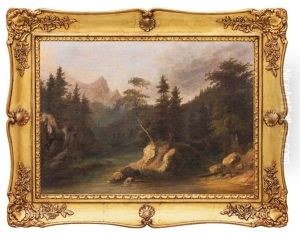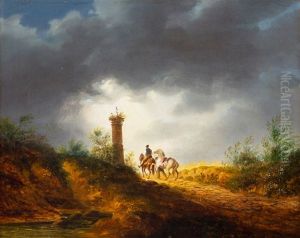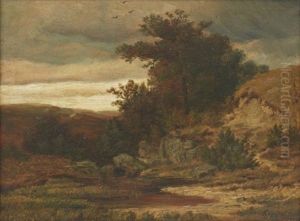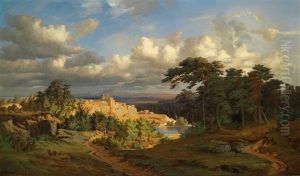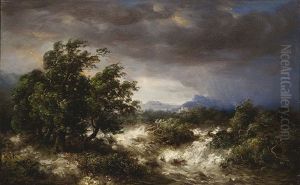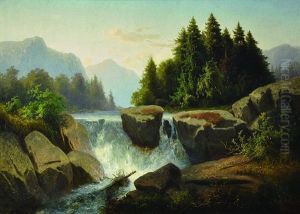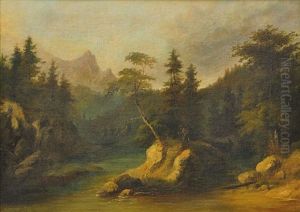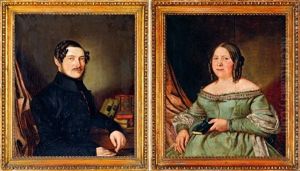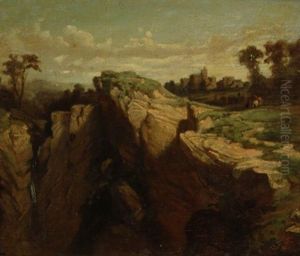Adolf Kosarek Paintings
Adolf Kosarek was a notable Czech landscape painter, born in 1830 in Prague, then part of the Austrian Empire. His relatively short life, ending in 1859 at the young age of 29, did not prevent him from making a significant impact on the Czech art scene, particularly in the realm of landscape painting. Kosarek's work is often associated with the mid-19th century Romantic movement, which emphasized emotion and individualism as well as glorification of the past and nature.
Kosarek received his early education at the Academy of Fine Arts in Prague before continuing his studies at the Academy of Fine Arts Vienna. His education under the guidance of leading artists of the time laid a solid foundation for his artistic development. Kosarek was particularly influenced by the Barbizon school, a group of French painters who advocated for realism in their depictions of nature and were pioneers in the practice of painting outdoors (en plein air), which greatly influenced Kosarek's approach to landscape painting.
Throughout his career, Kosarek focused on capturing the Czech countryside, often portraying the rugged beauty of the Bohemian landscape. His works are characterized by a meticulous attention to detail, a vibrant yet naturalistic color palette, and a profound sense of atmosphere. Kosarek’s ability to capture the mood of a landscape, from the serene to the tumultuous, earned him a place among the most celebrated Czech landscape painters of his time.
Unfortunately, Adolf Kosarek's career was cut short by his premature death in 1859. Despite his brief life, his contributions to Czech art have been lasting. Kosarek's works continue to be celebrated for their beauty and emotional depth, and they remain an important part of Czech cultural heritage, featured in museums and galleries throughout the country and beyond. His legacy is that of a pioneer who helped to define Czech national identity through the lens of landscape art at a time when the nation was striving for cultural and political autonomy.
